Coin in the shape of a knife
During the two periods of the Eastern Zhou Dynasty (770–256 B.C.), the Spring and Autumn Period (771–476 B.C.) and (in particular) the Warring States Period (475–221 B.C.), bronze money appeared in many forms, mostly miniature replicas of everyday objects such as shovels, knives, bells and other musical instruments, keys, clothes, and other types of weapons and tools. Each state of the fragmented Zhou dynasty territory minted its own money, which is why these coins are often referred to as “state coins” or guobu 國布 in Chinese numismatics. The most common types of coins, and the longest in circulation, were shovel-shaped coins (bubi 布幣 or buqian 布錢) and knife-shaped coins (daobi 刀幣 or daoqian 刀錢).
The large knife-shaped coin in the photo is an example of the so-called “ming knife” (ming dao 明刀). The coin type got its name from the archaic script on the front of ... more
During the two periods of the Eastern Zhou Dynasty (770–256 B.C.), the Spring and Autumn Period (771–476 B.C.) and (in particular) the Warring States Period (475–221 B.C.), bronze money appeared in many forms, mostly miniature replicas of everyday objects such as shovels, knives, bells and other musical instruments, keys, clothes, and other types of weapons and tools. Each state of the fragmented Zhou dynasty territory minted its own money, which is why these coins are often referred to as “state coins” or guobu 國布 in Chinese numismatics. The most common types of coins, and the longest in circulation, were shovel-shaped coins (bubi 布幣 or buqian 布錢) and knife-shaped coins (daobi 刀幣 or daoqian 刀錢).
The large knife-shaped coin in the photo is an example of the so-called “ming knife” (ming dao 明刀). The coin type got its name from the archaic script on the front of the blade, in which the modern character ming 明 can be seen, meaning “bright”. Ming knives have been found in large numbers around Beijing, in the areas of today’s Hebei, Henan, Shandong, Shanxi, Shaanxi, and Manchu provinces, and even in the Korean peninsula and Japan, testifying to their wide distribution. They undoubtedly date from the Warring States Period, most probably between 400 and 220 B.C. They are characterised by three parallel lines on the handle of the knife and, as mentioned above, the character ming on the blade. The reverse of the coins also usually bears archaic inscriptions, which are not always decipherable. Due to corrosion, they are no longer legible on this coin. At the end of the Ming knife handle there is a round opening, like that on a real knife. With coins, it probably also had a practical function, as several pieces could be strung together at the same time. (MG)
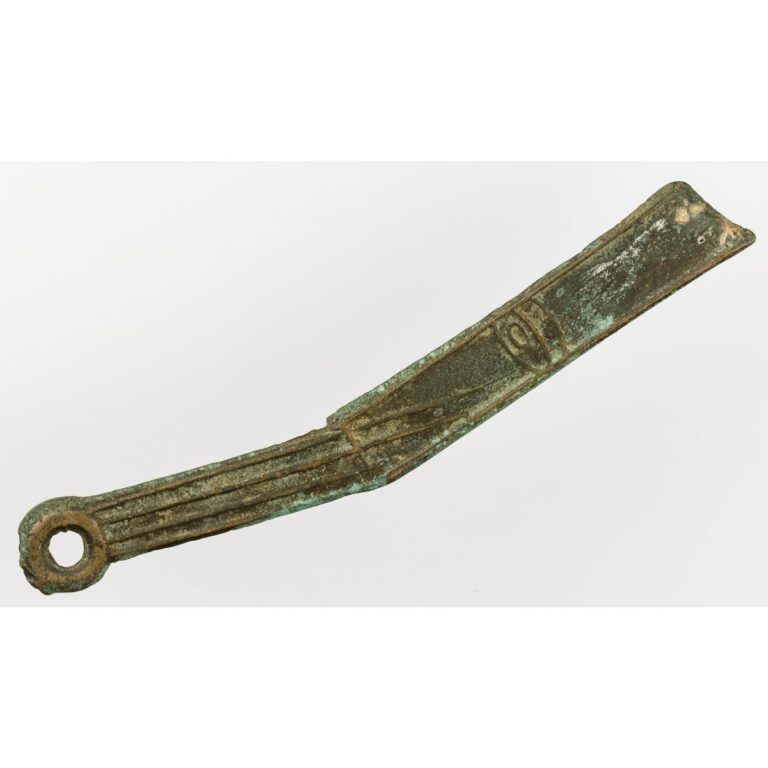
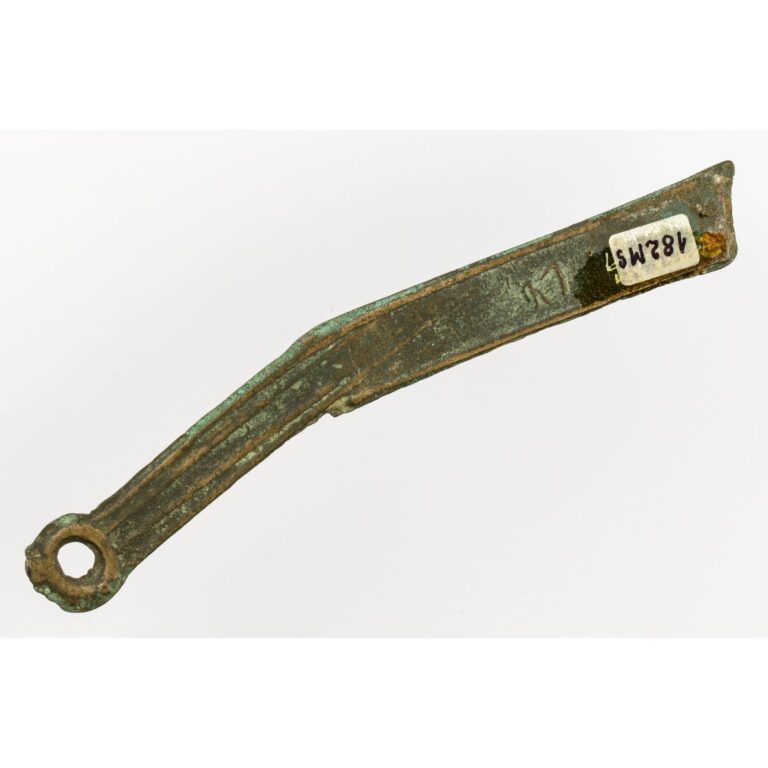
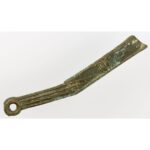
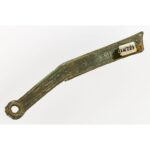

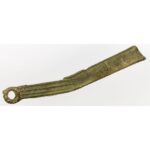




















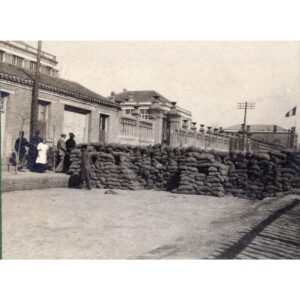












Do you have a comment or additional information about the subject?